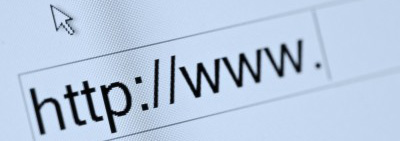
The Uniform Domain-Name Dispute Resolution Policy (“UDRP”) provides mandatory non-binding arbitration to resolve disputes involving .com, .net, .org, .info, .biz, .aero, .coop, and .museum domain names.The UDRP arbitration policy is in place to resolve very specific disputes– namely abusive and bad faith registrations of domain names, often referred to as cybersquatting.
Not all disputes regarding a domain name can be resolved using the UDRP. Notably, the UDRP cannot resolve contractual or business disputes regarding ownership or use of a domain name. In addition, the remedies are limited to cancellation or transfer of the domain name, no damages or attorney’s fees can be assessed under the policy.
In order to prevail in a UDRP arbitration proceeding, a petitioner holder must establish (1) that it owns a legally recognized trademark that is identical or confusingly similar to the domain name; (2) that the current registrant of the domain name has no legitimate rights in the name; and (3) that there is evidence of bad faith or abuse by the domain holder. All three of these tests must be met. A failure to meet anyone of these three prongs is an absolute defense for the accused trademark holder.
Issue 1: Identical or Confusingly Similar
In order to successfully make out its claims, a trademark holder must not only show it has rights in a claimed mark, but that the claimed mark is identical or confusingly similar to the disputed domain name.
In considering whether a domain name is confusingly similar to a mark, the question is whether the challenged domain name is identical to the trademark holder’s mark or sufficiently approximates it, visually or phonetically. If the marks are identical, this test is easy to meet. However, when there are difference between the trademark and the domain name, the question is how significant the differences are, how unique the trademark is, and ultimately, how great the risk of confusion is between the domain name and the trademark.
Issue 2: Legitimate Rights in the Domain Name
Even if a domain name is identical or confusingly similar to a trademark, if the domain name holder can show it has legitimate rights in the name, the domain name holder will get to keep its domain. For example, if an apple orchard had registered apple.com and put up a website promoting its apple’s, Apple, Inc. would not be able to use the UDRP to take that domain from the orchard.
There are several ways a domain name holder can show legitimate rights in a domain name. For example, if the domain name holder is actually using the domain name in connection with a bona fide offering of goods or services that may be enough to demonstrate a legitimate right in the domain name. Even preparations to use a disputed domain name may be sufficient to show legitimate rights in the name. In addition, if a domain name holder can show it has been commonly known by the domain name, this may be sufficient to show a legitimate interest in the domain name. The most obvious example of this is when the domain name holder’s corporate name or DBA matches the disputed domain name.
Domain name holders should succinctly catalog — and support with evidence — all legitimate uses made of the domain name. Any evidence that a domain name holder has that it has a legitimate interest in a domain name may be presented as a defense.
Issue 3: Registration and use of the domain name in bad faith
Finally a trademark holder must demonstrate that the domain name holder registered and used the domain name in bad faith. Most commonly, trademark holders argue that the domain name was registered either (i) for the purpose of selling, renting, or transferring the domain name to the trademark holder or (ii) to create a likelihood of confusion with the trademark holder for commercial gain. In a dispute between competitors, trademark owners will argue that the domain name was registered to disrupt the trademark owners business to prevent the trademark holder from reflecting its trademark in a correspondence domain name.
In general, the more distant the goods and services of the domain name holder are from the trademark holder (e.g. the Apple orchard vs. Apple Computer) the less likely a trademark holder will be able to show “bad faith” on the part of the domain name holder.
